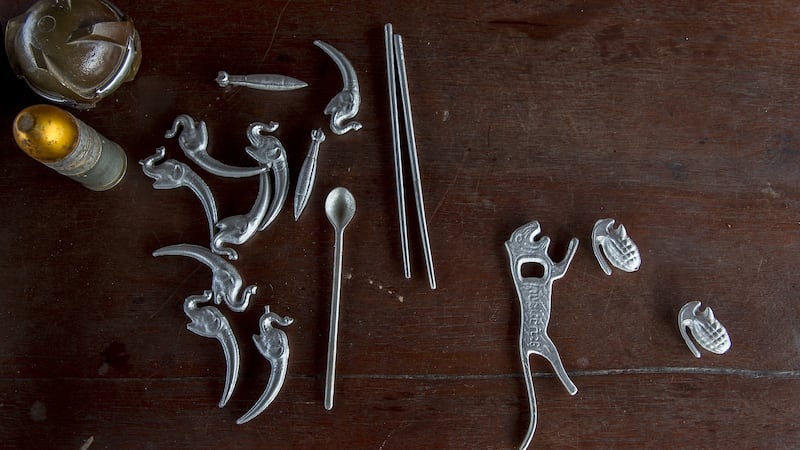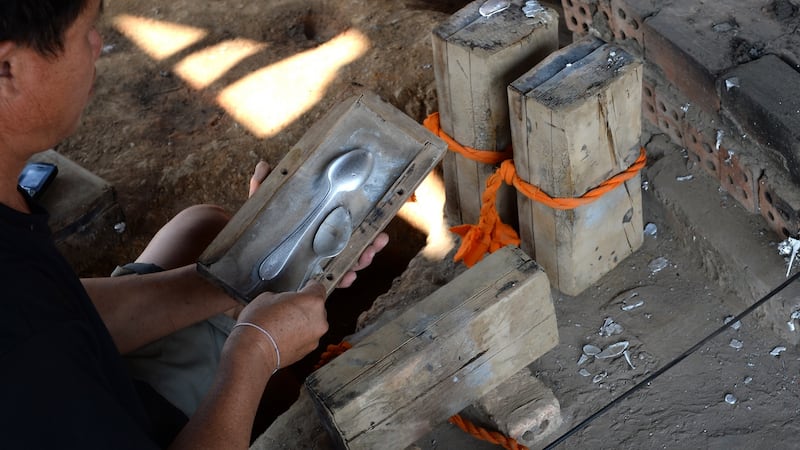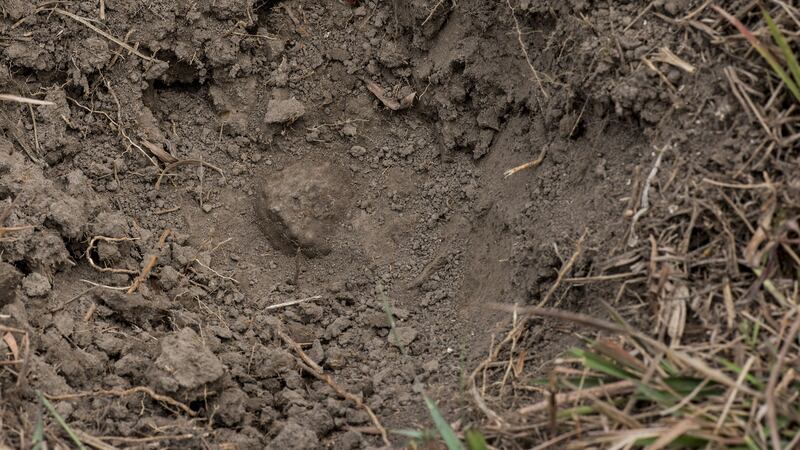The village of Ban Napia in the Xieng Khuang province of Laos has become a tourist destination in recent years. It's not because the village is particularly pretty, or has any of the ancillary services often associated with tourists, such as bars and restaurants. Yet it's routinely included on the itinerary of most tours that go out of Phonsavan, the nearest large town.
Ban Napia, which is made up of 42 wooden houses, most of them located either side of one dusty street, has become known as “Spoon Village”. There is a huge volume of shrapnel that is gathered daily during unexploded ordnance (UXO) clearance in Laos.

Between 1964 and 1973, the United States dropped more than 270 million bombs on the country, much of it in an attempt to prevent supplies being taken into Vietnam. Some 80 million of these remain unexploded in the ground. Despite a painstaking clearance process that involves some 3,000 people on any given day in Laos, civilians continue to be killed and maimed by UXO.
The rest are live devices: among them, cluster bombs, mortars and grenades
Each province has a different policy for retrieved shrapnel. Some 95 per cent of what the UXO companies find during clearance of fields and villages is shrapnel. The rest are live devices: among them, cluster bombs, mortars and grenades. These are destroyed at the end of each day with controlled explosions.
In this province, for instance, in Xieng Khuang, the UXO company MAG, has a policy of giving all scrap metal found during clearance, to the farmer whose land it was on. He can sell it on, although other people in official capacities we meet on a week-long reporting trip to Laos say that the government banned the selling of scrap metal for profit some years ago. Nobody seems to know what’s allowed and what’s not.
Making spoons
What’s clear is that the volume of metal is so vast in Laos that it’s routine to see defused rockets, shells, and mortars in people’s gardens. They have been turned into lamp-bases, buckets, flower planters, and even boats. Back in Phonsavan, while browsing through the food and hardware market, I came across stalls selling aluminium spoons from this village, Ban Napia. On sale also at the market were knives, spades, hammer heads, axe heads, trivets and shovels, all made from the sturdier melted-down metal of defused ordnance.
In Ban Napia, local people started making spoons some years ago from melting down the aluminium from scrap. Our translator tells us that now all 42 houses in the village make spoons. We visit one house to see the homemade kiln that husband and wife Kien and Toui Pheng make 800 spoons from every day.
Kien is sitting down, each leg in a kind of dug-out pit. In front of him is the kiln, into which he keeps tossing pieces of aluminium. There are three upright concrete boxes beside him, like bricks, each of which are tied together with strips of fabric. When he takes out the molten metal, he pours it into an opening at the top of the upright box. Then, working back from the mould he filled first, he opens the fabric holding the two pieces together and reveals a large spoon inside, already set.

Any that aren’t perfect are thrown back into the kiln to be melted down again. Between Kieng and Toui, they make 800 spoons a day. So do many other of the villagers. Although the process usually stops in the summer months, when temperatures rise above 40 degrees, that’s collectively a huge number of spoons. In addition, they are aluminium; a metal that, when unprotected by any other material, has all but vanished from cookware and cutlery used in western kitchens.
Our translator jokes that the local people refer to these shells as souvenirs from the United States
There have been other initiatives to make jewellery; many of these by US-based jewellers. The actress Emma Watson has appeared on the Ellen DeGeneres Show wearing earrings made from shrapnel scrap. Love is the Bomb is the name of one jewellery line. Although jewellery makers Article 22 say their purpose is to raise awareness of the war and to “transform the negative into the positive”, some people question the ethics and taste of objects of war being turned into necklaces and earrings.
Souvenirs from the US
Then there is the house in a village not far from Leng where tourists pay the equivalent of a dollar to view the garden. All around the perimeter fence are empty casings of bombs, about a metre high. Our translator jokes that the local people refer to these shells as “souvenirs from the United States”, but it’s difficult not feel uneasy at seeing objects of war turned into paid photo-opportunities for tourists.
We’re told that all the scrap used in Ban Napia has been donated to the villagers, and that it all comes from defused explosives. People in other parts of the country are still being killed, maimed and injured by UXO, and this has happened to some of them because they are motivated to search for scrap for profit. Not everything they find is safe.

But when you’re poor, as so many people in Laos are, and if you’re aware that scrap metal has some value – even if only for your own purposes, to make some household item for – it’s difficult to stop looking for it. I interviewed one UXO survivor in the village of Leng, Khammeung Phommalein (25). Last October, he picked up a UXO, thinking it was safe.
“It was the first time I had ever brought a piece of UXO home,” he said. When Phommalein prised the explosive open, it went off and blinded him. “All I wanted to do was to make a knife from the metal,” he says.
*This article was supported by a grant from the Simon Cumbers Media Fund












